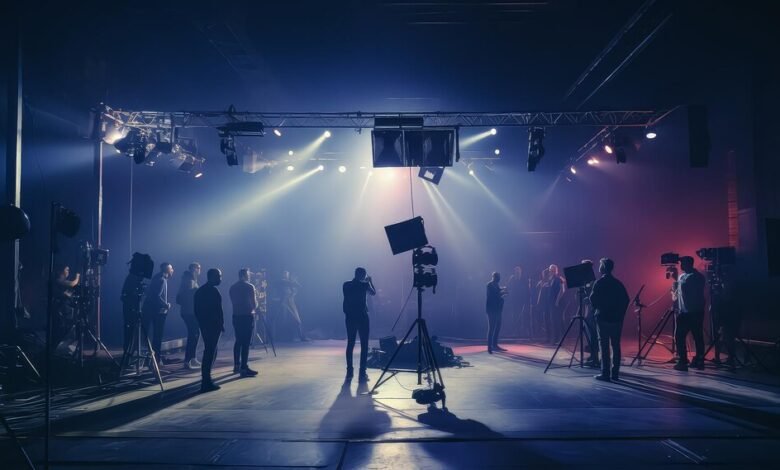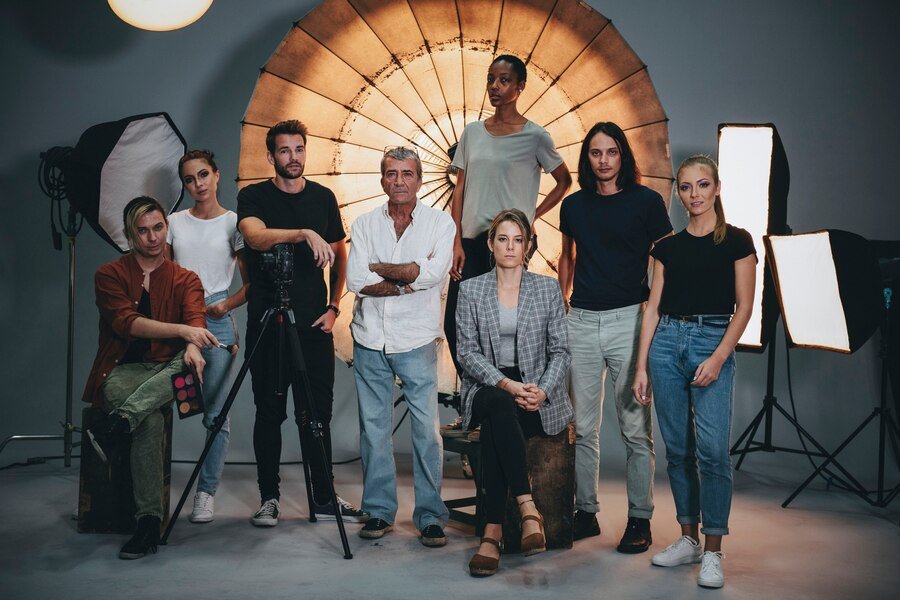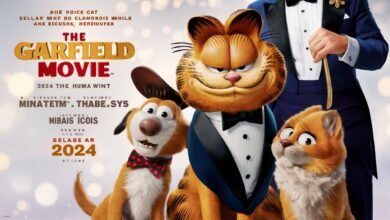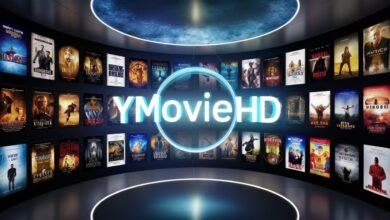Lights, Camera, Inclusion! How Diversity is Shaping Showbiz Today

Introduction
In an era where the entertainment industry wields immense influence, the evolution of diversity and inclusion is more significant than ever. From the movies we watch to the celebrities we admire, showbiz has a profound impact on our perceptions and attitudes. But how far have we come in ensuring every voice is heard and every story is told? This post dives into the transformation of diversity and inclusion in showbiz, shedding light on historical milestones, current successes, and future possibilities.
The Early Days of Representation
The road to diversity in entertainment has been long and winding. In the early days, showbiz was predominantly dominated by a single narrative—one that often excluded people of color, women, and other marginalized groups. Silent films and early talkies frequently depicted stereotypes and offered limited roles to non-white actors.
Representation was not just skewed; it was almost non-existent. For instance, black actors were mostly seen in subservient roles, and Asian characters were played by white actors in “yellowface.” These practices were reflections of broader societal prejudices, and they perpetuated harmful stereotypes.
However, there were pioneers who challenged the status quo. Paul Robeson, an African American actor, and Anna May Wong, the first Chinese American Hollywood movie star, made significant strides in early representation. Their courage and talent set the stage for future generations.
Breaking Barriers in the Golden Age of Hollywood
The Golden Age of Hollywood saw some progress, albeit slow. The Civil Rights Movement of the 1960s began to influence mainstream media, pushing for more inclusive narratives. Sidney Poitier became a trailblazer, winning an Academy Award for Best Actor in 1964. His roles were groundbreaking, portraying black characters with dignity and complexity.
Despite these breakthroughs, the industry still had a long way to go. Women, particularly women of color, faced significant barriers. Scripts were typically written by and for men, and female characters were often relegated to supporting roles. However, actresses like Dorothy Dandridge and Rita Moreno began to break these molds, earning critical acclaim and paving the way for future female stars.
The Rise of Independent Cinema
The 1990s and early 2000s marked a significant shift with the rise of independent cinema. Independent filmmakers began to push boundaries, telling stories that mainstream Hollywood often ignored. Directors like Spike Lee and Mira Nair brought diverse perspectives to the forefront, challenging audiences and industry norms alike.
Independent films became a platform for underrepresented voices. They tackled issues such as racism, gender inequality, and LGBTQ+ rights with a rawness and authenticity that mainstream cinema often lacked. These films not only provided visibility but also sparked conversations that rippled through society.
The success of independent cinema demonstrated a hunger for diverse stories. It showed that audiences were ready for narratives that went beyond the typical Hollywood fare, setting the stage for more inclusive storytelling in the years to come.
Modern Milestones in Diversity and Inclusion
Today, the entertainment industry has made significant strides in championing diversity and inclusion. Films like “Black Panther” and “Crazy Rich Asians” have not only achieved commercial success but have also broken cultural barriers. These movies showcased the richness of different cultures and proved that diversity sells.
“Black Panther,” for instance, was a cultural phenomenon. It brought African culture to the global stage and depicted black characters as heroes and leaders. Similarly, “Crazy Rich Asians” offered a glimpse into the lives of Asian characters, celebrating their heritage and breaking away from stereotypes.
Television has also seen a surge in diverse storytelling. Shows like “Pose,” which features the largest transgender cast in TV history, and “Master of None,” which explores the experiences of an Indian American man, have garnered critical acclaim. These shows not only entertain but also educate, challenging viewers to see the world through different lenses.
Success Stories and Ongoing Challenges
Despite these successes, the industry still faces challenges. While there has been progress, true representation is still a work in progress. Behind the camera, diversity remains an issue. There are still too few women and people of color in directing, producing, and writing roles.
However, success stories continue to inspire change. Ava DuVernay, a director and producer, has been a vocal advocate for inclusion. Her works, including “Selma” and “When They See Us,” highlight black experiences and have sparked important conversations about race and justice.
Similarly, Reese Witherspoon has championed female-driven stories through her production company, Hello Sunshine. By producing shows like “Big Little Lies” and “The Morning Show,” she has created platforms for complex, multifaceted female characters.
Impactful Case Studies
Several TV shows, movies, and celebrities have significantly impacted promoting diversity and inclusion. “Orange is the New Black” broke new ground with its diverse cast, exploring issues of race, sexuality, and gender identity. The show’s success demonstrated the demand for inclusive storytelling.
In the world of film, “Moonlight” made history by winning the Academy Award for Best Picture. The film, which tells the story of a young black man grappling with his identity and sexuality, was a critical and commercial success. It highlighted the importance of diverse narratives and the power of independent cinema.
Celebrities like Laverne Cox and Riz Ahmed have also been influential. Cox, a transgender actress, has used her platform to advocate for LGBTQ+ rights, while Ahmed has spoken out about the lack of representation for Muslim actors in Hollywood. Their activism has brought important issues to the forefront and inspired change within the industry.

The Role of Streaming Platforms
Streaming platforms like Netflix, Amazon Prime, and Hulu have played a pivotal role in fostering diversity and inclusion. These platforms have provided opportunities for stories that might not have found a place in traditional Hollywood. They have given a voice to underrepresented communities and allowed for more nuanced and authentic storytelling.
Netflix’s “13th,” a documentary by Ava DuVernay, explores the intersection of race, justice, and mass incarceration in the United States. The film received widespread acclaim and brought important social issues to the attention of a global audience.
Amazon Prime’s “Transparent,” a series about a family’s discovery that their parent is transgender, broke new ground in LGBTQ+ representation. The show was praised for its sensitive and authentic portrayal of transgender experiences and won multiple awards.
The Influence of Social Media
Social media has also had a profound impact on the push for diversity and inclusion in showbiz. Platforms like Twitter, Instagram, and TikTok have given a voice to marginalized communities and allowed for real-time conversations about representation.
Hashtags like #OscarsSoWhite and #MeToo have brought attention to issues of racial and gender inequality within the industry. These movements have sparked important conversations and led to tangible changes, such as increased diversity in Academy Award nominations and greater awareness of sexual harassment in Hollywood.
Celebrities and influencers have used their platforms to advocate for change. Actors like Yara Shahidi and Amandla Stenberg have been vocal about the importance of representation and have used their influence to promote social justice causes.
Future Predictions and Trends
Looking ahead, the future of diversity and inclusion in showbiz seems promising. There is a growing recognition that diverse stories are not just morally right but also commercially viable. Audiences are demanding more inclusive content, and the industry is slowly catching up.
We can expect to see more representation of underrepresented groups, both in front of and behind the camera. The success of films like “Black Panther” and “Crazy Rich Asians” has shown that there is a strong market for diverse stories. This trend is likely to continue, with more studios investing in projects that reflect the diversity of their audiences.
Technological advancements, such as virtual reality (VR) and artificial intelligence (AI), also have the potential to revolutionize storytelling. These technologies can create more immersive and inclusive experiences, allowing audiences to engage with stories in new and meaningful ways.
The Importance of Continued Efforts
While progress has been made, the work is far from over. It is crucial for the industry to continue prioritizing diversity and inclusion. This means not only telling diverse stories but also ensuring that marginalized communities have opportunities to create and lead these projects.
Organizations like the Geena Davis Institute on Gender in Media and the Annenberg Inclusion Initiative are doing important work in advocating for greater representation in Hollywood. Their research and advocacy efforts are helping to hold the industry accountable and push for meaningful change.
Conclusion
The evolution of diversity and inclusion in showbiz is a testament to the power of storytelling. Diverse narratives have the ability to challenge stereotypes, foster empathy, and drive social change. For entertainment enthusiasts, this is an exciting time to witness the transformation of the industry.
By continuing to support and advocate for inclusive content, we can ensure that every voice is heard and every story is told. Whether you’re a viewer, a creator, or a member of the industry, your efforts contribute to a more diverse and inclusive entertainment landscape.
For those looking to explore more about diversity in showbiz or seeking guidance on inclusive storytelling, consider connecting with industry experts and joining communities that champion these values. Together, we can create a richer, more inclusive world of entertainment.
Feel free to share your thoughts on the evolution of diversity and inclusion in showbiz. Your insights and experiences are invaluable in shaping a more inclusive future.



